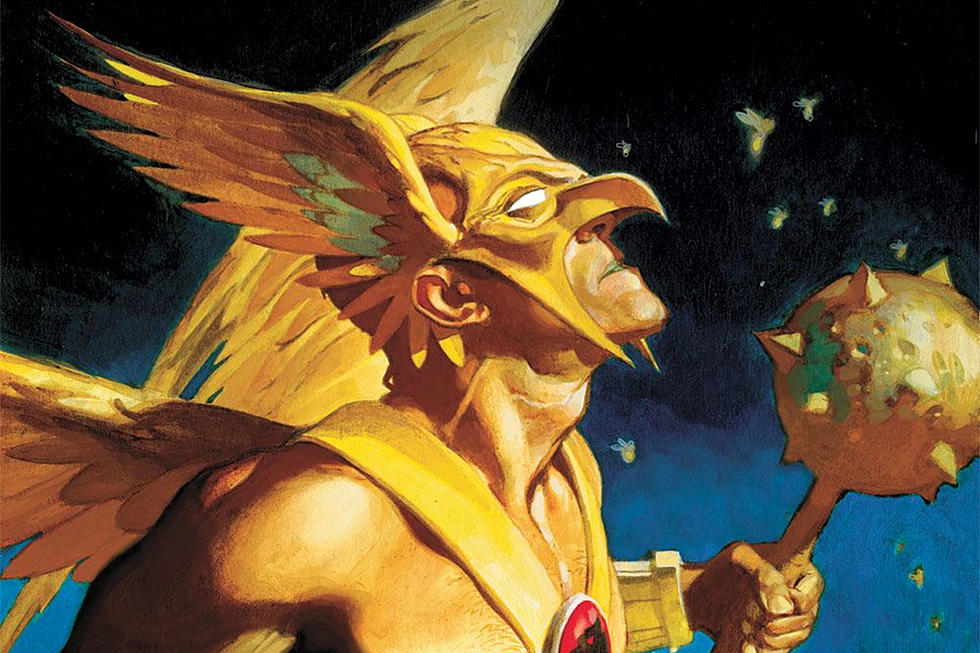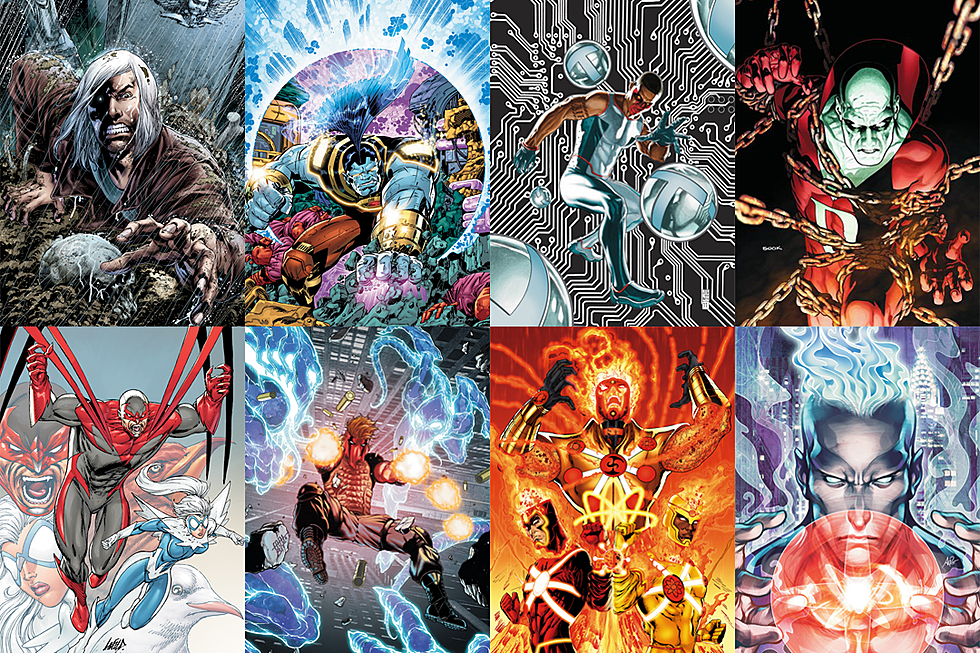![DC Comics Survey Reports ‘New 52′ Readership 93% Male, Only 5% New Readers [Updated]](http://townsquare.media/site/622/files/2012/02/dc-comics-new-52.jpg?w=980&q=75)
DC Comics Survey Reports ‘New 52′ Readership 93% Male, Only 5% New Readers [Updated]

The results of The Nielsen Company's market research for DC Comics that surveyed "New 52" readers were released at ComicsPro's Dallas meeting yesterday and well... there's not much that's brave or bold about them. ICv2 reports that 70 percent of the survey's 5,336 respondents were already fans, with only 5 percent completely new to buying comics, and 93% were male. What's more, only an estimated 2 percent were younger than 18 years old. The results are troubling, and raise serious questions about DC's ability to expand their audience base, and the accessibility of their content to both women and younger readers.The numbers seem particularly stark in the context of the stated goal of the new 52 to create a "more modern, diverse DC Universe" that would both reach beyond its existing fanbase. As Dan DiDio told USA Today when the initiative was announced, "If we can convince the people here we're doing something brand-new and fresh, we have a good chance to really get the people outside on board." If these results are any indication, the New 52 may have resonated with the existing audience -- or at least produced higher sales -- but had more trouble convincing the "people outside" of their new vision.
Notably, while the New 52 offered more titles with lead female characters than Marvel Comics' superhero line, there was a dramatic lack of female creators involved in actually creating the comics of the new 52, aside from long-time DC writer Gail Simone on Firestorm and Batgirl. Simone has since stepped down from Firestorm, while artist Nicola Scott was hired for a three-issue run on Superman, Amy Reeder began her long-awaiting illustrating duties on Batwoman, and writer Ann Nocenti will soon be taking as writer over Green Arrow. Nonetheless, the gender gap for creators in the New 52 is still massive, a ratio that is echoed by the reported readership: 93% male to 7% female.
It's easy to play chicken and egg when it comes to the sad demographics of superhero readership; are the numbers of female readers low because publishers aren't making content that appeals to them, or are publishers not making content that appeals to them because they don't read? It's easy to go around and around the ouroboros of blame, but you know what would have been a really great opportunity to find out? A massive line-wide relaunch aimed at expanding readership with a big mainstream media push behind it. If DC Comics had devoted as much energy to cultivating content more likely to appeal to female readers -- and the female creators more likely to make it -- instead of giving us more of the same written and drawn by more of the same, maybe we would have found out.
As Jill Pantozzi writes at The Mary Sue:
The bottom line? It's not that women aren't reading comics, it's that a lot of women aren't reading DC comics and there are legitimate, concrete reasons for that. Why do women make so much noise about what's going on at DC? They WANT to read your comics. They LOVE your characters. They're just turned off by how they're represented. It's an incredibly easy fix if you'd just try.
The shortest version of the results is that DC did well where they already did well: among men, and specifically among older men, and even more specifically among older men who already read their comics. As an initiative to boost sales and get mainstream attention the new 52 certainly succeeded, but as outreach attempt for new readership, these results point to failure. If nothing else, the dismally low numbers for younger readers -- 2% under the age of 18 -- should worry anyone who cares about the future of superhero comics, and its ability to sustain an audience into the future.

DC's Source blog reports that what they call "avid fans" bought "up to 20 titles out of the 52 titles," although they did not specify what percentage of readers this represented, or how how many of those readers purchased in the higher end of the "up to 20 range."
The survey was conducted online, via e-mail, and in comic shops (where a pushy survey employee had a high-profile incident with Patton Oswalt), and it also found that there was a 50/50 split between readers who made more or less than $60,000 a year, which makes sense considering the median household income for most Americans is around $50,000 a year. According to DC Comics, this statistic validated their decision to hold the price point at $2.99.
The same-day digital sale of the comics was also a big part of the New 52 announcement, and something unnerved some retailers concerned that it would cut into print sales. John Rood, DC's Executive Vice President of Sales, Marketing and Business Development, told ICv2 that "New 52" digital sales are additive, and not harming print sales for brick and mortal stores:
What makes us say digital is 'additive' is what we have seen in sales results since the months during which the survey was taken. The digital sales as a percentage of "New 52" titles have not varied from the first month. The percentage going to digital comics has remained the same, which indicates that digital is not gaining a larger share at the expense of print.
There was crossover between those who primarily read digital and those who primarily read print, although digital readers were far more likely to buy print than the other way around; while 57% of digital readers also bought print issues, only 16% of print comics readers reporting buying digital. The reasons behind their preferences are pretty standard: digital fans want immediate access, convenience and portability, while print fans enjoy the act of collecting and aren't super into reading comics on a screen. Rood also said that significant numbers of fans who opt for DC's print/digital combo packs aren't redeeming their digital codes, calling the numbers for redeemed digital issues "astonishingly low."
It is also worth noting that the survey in question was conducted within the first several months of the launch, and paints a portrait of the initial audience response to the relaunch, not a comprehensive portrait of the reader demographics to date. Rood told ICv2 that DC plans to conduct further research in order to evaluate the impact of the "New 52" relaunch.
[Via The Source, ICv2]
More From ComicsAlliance




![You Are Now Leaving Paradise Island: Brian Azzarello & Cliff Chiang Discuss Their Epic ‘Wonder Woman’ Work [Interview]](http://townsquare.media/site/622/files/2014/11/WWheader.jpg?w=980&q=75)




